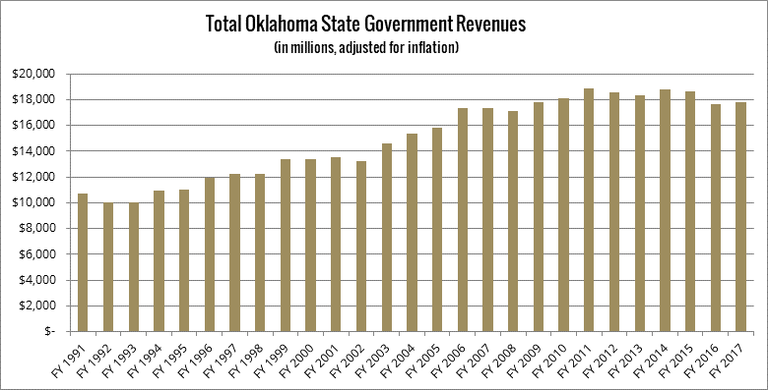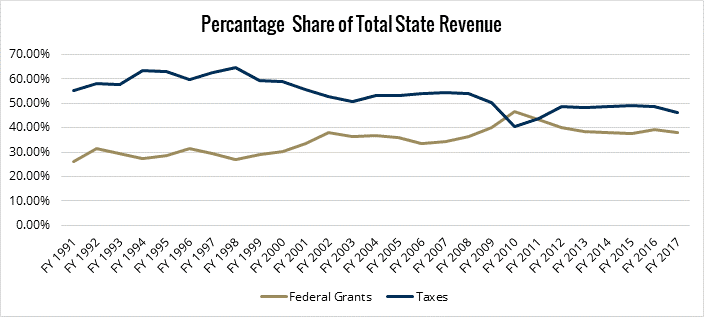Good Government
Curtis Shelton | February 16, 2018
More federal funds increases need for transparency
Curtis Shelton
Many often use the level of state revenues at the beginning of this current decade as the reference point to show just how much Oklahoma’s revenues have declined. It may seem odd to remember a time when many in the state of Oklahoma were struggling through the worst recession since 1929 as an enviable time, but it is true the state government revenues were reaching records highs. That surprising fact was caused by an influx of federal money that was sent to the state as a stimulus by the Obama administration.

As the chart below shows, Oklahoma has steadily increased its reliance on federal grants to provide funding to state services. In fiscal year 1991, 26% of total state revenue came from federal funds compared to 55% from state tax revenue. That gap began closing at the beginning of the 2000’s, and federal funds actually surpassed state tax revenue as the number one funding source for Oklahoma government during the recession years because of the Obama stimulus. Now in 2017, federal funding makes up 38% of state revenue versus 46% from state taxes.

The stimulus was intended to keep states from cutting services during the economic recession. This is exactly what happened, and no meaningful budget reforms were enacted during that time. As the federal stimulus money slowly dissipated, the price of oil began taking off thus keeping revenues at near-record highs for an extended period of time. Once the state-wide recession began in 2015, state agencies and legislators finally faced tough financial decisions.
Another important factor in the rise of federal grants to the state is the “strings” attached to the money. Much of the federal funds coming in are earmarked for specific uses, meaning the Legislature has less control over state spending. If Oklahoma continues to rely heavily on federal funding, it is imperative to ensure the uses of and restrictions on those funds are transparent. This is especially relevant for today’s Legislature as the investigation continues into the Oklahoma State Department of Health over the mismanagement of at least $30 million. There have been attempts to increase transparency, such as House Bill 1748 in 2015, but the measure was vetoed by Gov. Mary Fallin.
Sources and chart data provided by the Oklahoma Office of Management and Enterprise Services (OMES) Comprehensive Annual Financial Report (CAFR).

Curtis Shelton
Policy Research Fellow
Curtis Shelton currently serves as a policy research fellow for OCPA with a focus on fiscal policy. Curtis graduated Oklahoma State University in 2016 with a Bachelors of Arts in Finance. Previously, he served as a summer intern at OCPA and spent time as a staff accountant for Sutherland Global Services.